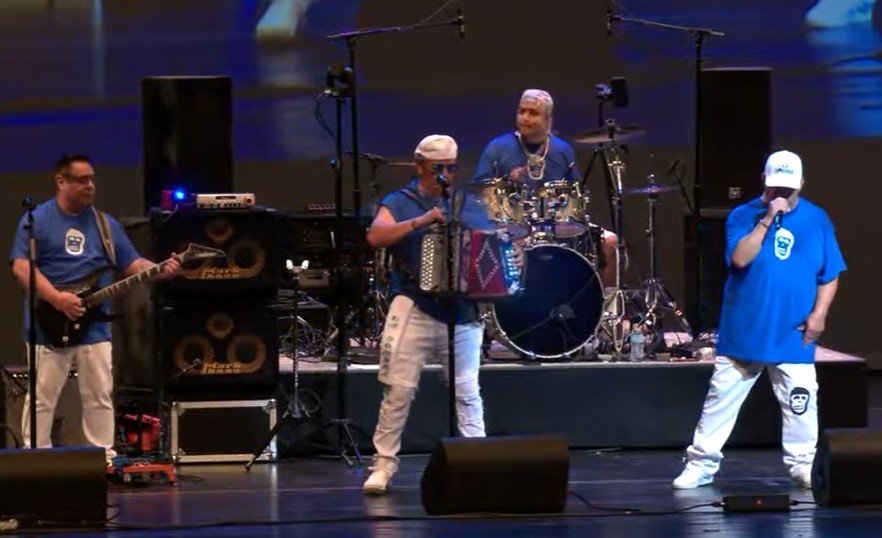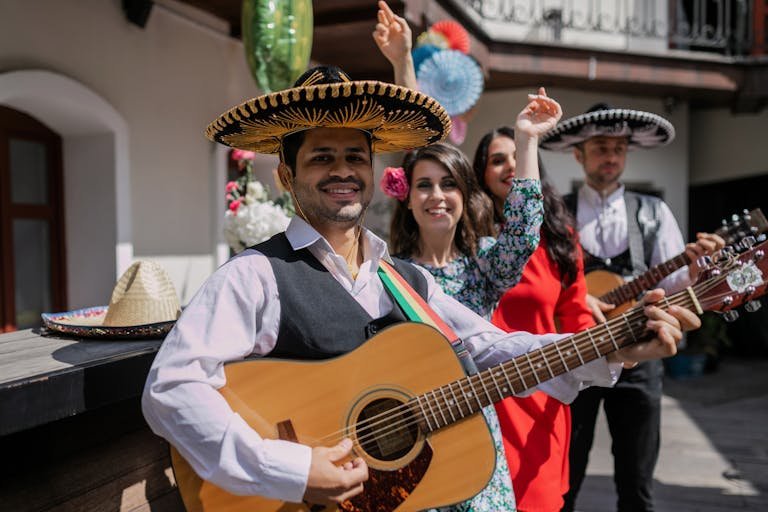La Sombra: The Tejano Band That Redefined Mexican American Music
La Sombra
Who Is La Sombra
La Sombra, often called La Sombra de Chicago, is a legendary Tejano group formed in Aurora, Illinois, in 1980 under the leadership of Tony Guerrero. Unlike most Tejano bands of the era, La Sombra emerged outside Texas, which gave them a fresh sound that mixed conjunto traditions with urban pop and cumbia influences. This innovative style appealed to older fans who cherished traditional rhythms and younger audiences eager for modern flair.
La Sombra’s Musical Biography
La Sombra began as a local band performing at community dances and events. Because they were rooted outside of Texas, their music carried unique elements that stood apart from the established Tejano scene. By the mid-1980s, their recordings gained traction in Texas, eventually leading to a record deal with Disa Records.
The late 1980s through the 1990s marked the group’s golden era. Their albums reached the Billboard Latin charts, and their concerts were known for sharp choreography, stylish uniforms, and a high-energy stage presence. They further expanded their audience by recording in both Spanish and English, a move that helped them connect with bilingual fans across the United States, Mexico, and Central America.
Key Achievements of La Sombra
- Released more than a dozen albums that became staples of Tejano radio and live events
- Earned nominations for Tejano Music Awards and Latin Billboard Awards
- Pioneered a crossover style that fused traditional Tejano with contemporary pop and dance rhythms
- Influenced future generations of Tejano musicians by showing that the genre could appeal to international and bilingual audiences
Top 10 La Sombra Songs That Defined Their Career
1. Dónde Está Mi Raza – Donde Está Mi Raza (1987)
An anthem of Mexican American pride and unity, this song encouraged listeners to embrace their cultural roots and identity.
2. Te Encontraré – Caliente Tierra de Ritmos (1988)
A romantic ballad about persistence in the search for love, offering hope to those who refused to give up on finding a soulmate.
3. Mi Primer Amor – One of a Kind (1989)
Capturing the sweetness of first love, this track connected deeply with younger fans experiencing romance for the first time.
4. El Baile del Sapo – One of a Kind (1989)
A humorous, upbeat dance song that became a crowd favorite for its quirky theme and irresistible rhythm.
5. Yo Te Amo – Good Boys Wear White (1990)
A sincere declaration of love, this ballad showcased La Sombra’s softer side and remains a timeless romantic classic.
6. Se Acabó – The Chi-Town Boys Are Back (1991)
A breakup anthem about recognizing the end of a relationship and finding strength in moving on.
7. Así Somos – Que Suerte Tengo (1992)
A reflective song celebrating human imperfections, reminding fans that struggles and joys are part of life’s shared experiences.
8. Sentimientos – La Sombra (1993)
An emotional ballad that explored the complexity of unspoken emotions in relationships, highlighting the band’s versatility.
9. Aquel Carretero – Un Día en Tu Corazón (1994)
A nod to Mexican ranchera traditions, this song honored themes of perseverance and rural life while connecting with modern Tejano fans.
10. Niña Coqueta – Niña Coqueta (1996)
A lively cumbia that tells the story of a flirtatious young woman, cementing its place as one of the group’s most iconic dance tracks.
La Sombra’s Lasting Legacy
La Sombra’s music continues to resonate decades after its release. More than just a band, they became cultural ambassadors who helped showcase Tejano music on larger stages. Their ability to mix tradition with modern pop elements proved that Tejano could adapt and thrive beyond its Texas roots.
Because they achieved their success during a period of national attention for Tejano, La Sombra inspired both audiences and future musicians. Their professional image, innovative stage shows, and tireless touring schedule set a standard that raised expectations for the entire industry.
Frequently Asked Questions About La Sombra
Who founded La Sombra?
La Sombra was founded in Aurora, Illinois, in 1980 by Tony Guerrero, who served as vocalist, trumpet player, and songwriter.
Why is La Sombra important to Tejano music?
La Sombra is considered important because they helped expand Tejano music beyond Texas, blending traditional sounds with pop and dance elements while connecting with bilingual audiences.
What are La Sombra’s biggest hits?
Some of their greatest hits include “Dónde Está Mi Raza,” “Mi Primer Amor,” “El Baile del Sapo,” “Yo Te Amo,” and “Niña Coqueta.”
Did La Sombra record songs in English?
Yes, La Sombra recorded in both Spanish and English, which helped them gain crossover appeal with a wider audience.
When was La Sombra most popular?
Their peak popularity came during the late 1980s and throughout the 1990s, when they toured internationally and appeared regularly on Tejano radio charts.
A Part of Tejano History
La Sombra’s story remains one of the most fascinating examples of how a Tejano group from outside Texas could rise to prominence in a genre deeply tied to that state. Their songs told stories of cultural pride, love, heartbreak, and celebration, and they continue to be remembered on dance floors and in the memories of fans.
Celebrating La Sombra means honoring a pivotal moment in Tejano music history, when tradition met innovation and gave the world unforgettable music that still inspires today.
Frequently Asked Questions About La Sombra
Who founded La Sombra?
La Sombra was founded in Aurora, Illinois, in 1980 by Tony Guerrero, who served as vocalist, trumpet player, and songwriter.
Why is La Sombra important to Tejano music?
La Sombra is considered important because they helped expand Tejano music beyond Texas, blending traditional sounds with pop and dance elements while connecting with bilingual audiences.
What are La Sombra’s biggest hits?
Some of their greatest hits include “Dónde Está Mi Raza,” “Mi Primer Amor,” “El Baile del Sapo,” “Yo Te Amo,” and “Niña Coqueta.”
Did La Sombra record songs in English?
Yes, La Sombra recorded in both Spanish and English, which helped them gain crossover appeal with a wider audience.
When was La Sombra most popular?
Their peak popularity came during the late 1980s and throughout the 1990s, when they toured internationally and appeared regularly on Tejano radio charts.






